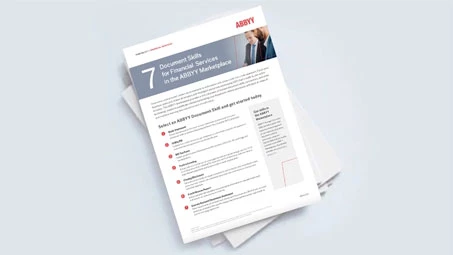
Today’s circumstances make it more necessary than ever for healthcare payers to smartly manage revenue, optimize utilization, and reduce costs across their care continuum. Taking long overdue, fundamental steps to embrace digitization and automation of paper-driven processes has become a must—and claims form CMS-1500 is no exception.
Despite the prevailing electronic exchange of information between healthcare payers and providers, a big portion of medical claims are still issued via paper and fax. Here's how three forward-thinking companies took action to digitally transform their claims processes to improve efficiencies in three surprisingly still common claims scenarios: paper, fax, and EDI.
1. Vision benefits provider eliminates 56,000 paper forms
Community Eye Care* (CEC) is an organization that struggled with manually processing HCFA 1500 sheets. CEC administers vision benefits for employers’ associations and health plans. Among the 150,000 HCFA 1500 forms it processed every year, 56,000 were paper. Processing the paper forms required four people conducting tedious and error-prone manual input. CEC deployed ABBYY Document AI—an intelligent document processing (IDP) solution—to automate the process for its superior OCR recognition and verification capabilities.
“We’ve seen nothing but great results,” commented the COO and Director of IT at Community Eye Care. “We’re able to keep our prices down, simply because we’ve become so much more efficient. The software has increased our productivity as well as employee satisfaction and has eliminated the need to bring on additional staff.”
2. Wellness provider transforms data from faxed forms and four times efficiency
ADURO* is a wellness platform provider that includes biometric testing and requires the manual processing of physician fax forms. Biometric testing measures markers such as body mass index, blood pressure, cholesterol levels, and glucose levels. The process begins when employees provide their physicians with a form. Each form is tailored to its client and features a combination of bubbles and handwritten notes. When completed by a physician, it is faxed to ADURO for processing.
“It’s vital to get that information into our database so employees can get on with their programs, get their awards, and work with their coaches,” says Dr. Mark Thompson, co-founder at ADURO. “We had to reclaim lost efficiency and maintain excellent service for clients’ employees.”
ABBYY not only automated the pulling of data from the forms but also transformed the workflow: incoming faxes are now routed to a HIPAA-compliant online fax service that automatically assigns them to the appropriate customer folder on a server. From there, the physician fax forms are loaded on to workstations, then software recognizes and captures the forms’ data. Within the first three months, ADURO was able to successfully process 5,000 physician fax forms. One person is able to process up to four times as many documents than before.





